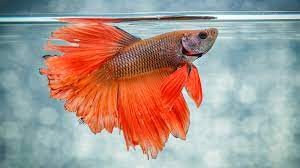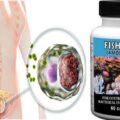Fish can make truly wonderful pets for people who don’t have the time or physical space to devote to a higher-maintenance companion animal. And under the right circumstances, fish can also be good “starter pets” to teach children the responsibility of caring for a pet.
In most cases, fish are able to recognize their owners and in some cases form an attachment. Many scientists that worked on the archerfish study report the fish appearing anxious and skittish if a stranger walked into the room, compared to a loving spit of water at a familiar scientist’s face. However, despite this close bond, there are times owners will have no choice but to put their beloved fish pets down.
Euthanasia is the act of inducing death without pain. Humane death of an animal may be defined as one in which the animal is rendered unconscious, and thus insensitive to pain, as rapidly as possible with a minimum of fear and anxiety.
Euthanasia is an acceptable method for relieving pain or distress that cannot be controlled by other means. Animal slaughter, depopulation, and humane killing are distinguished from euthanasia because they are performed for reasons different than sparing an animal from unresolvable painful or distressful conditions.
Euthanasia of animals is a common procedure performed by veterinary professionals, and because of the seriousness of the action, it deserves appropriate consideration. Some of the most difficult euthanasia decisions that veterinarians are required to make involve the euthanasia of healthy animals when no other alternative for their care can be identified. A veterinarian must be fully prepared to speak frankly about the animal’s condition and be knowledgeable about all possible alternative care resources when interacting with animal owners, caretakers, and control professionals.
Recognizing the importance of a “good death” in the humane termination of an animal’s life, many countries and professional organizations have developed guidelines and recommendations for animal euthanasia; some are more specific for certain species and environmental settings. Most recommendations emphasize certain factors that personnel performing euthanasia should consider when selecting the best method to use:
- ability of the method to induce loss of consciousness and death with minimal pain and distress
- time required to induce loss of consciousness
- reliability
- safety of personnel
- irreversibility
- compatibility with intended animal use and purpose
- documented emotional effect on observers or operators
- compatibility with subsequent evaluation, examination, or use of tissue
- drug availability and human abuse potential
- compatibility with species, age, and health status
- ability to maintain equipment in proper working order
- safety for predators or scavengers should the animal’s remains be consumed
- legal requirements
- environmental impacts of the method or disposition of the animal’s remains
Euthanizing agents cause death by three basic mechanisms:
1) direct depression of neurons necessary for life function
2) hypoxia, and
3) physical disruption of brain activity.
Because loss of consciousness resulting from these mechanisms can occur at different rates, the suitability of a particular agent or method will depend on whether an animal experiences distress before the loss of consciousness. Unconsciousness, defined as loss of individual awareness, occurs when the brain’s ability to integrate information is blocked or disrupted.
Ideally, euthanasia techniques cause a rapid loss of consciousness, followed by cardiac or respiratory arrest and death. This may occur very rapidly in a technique, such as a gunshot targeting the brain, or more gradually, with a method that first induces unconsciousness, such as anesthetic overdose. If loss of motor or respiratory and cardiac function precedes loss of consciousness, as might be the case if paralytic agents are used, animals may become fearful and experience distress, which is not acceptable.
For a list of acceptable methods and agents for euthanasia of different species of animals, see the accompanying table. The full AVMA Guidelines for Euthanasia 2020 provide information necessary to correctly select and implement these techniques.
It is important that euthanasia is provided in a manner that minimizes distress to the animal and considers their natural behavior. A euthanasia approach that can be applied in familiar surroundings may help reduce distress. For animals accustomed to human contact, gentle restraint (preferably in a familiar and safe environment), careful handling, and talking during euthanasia often have a calming effect and may also be effective coping strategies for personnel and animal owners. Sedation and/or anesthesia may help to achieve the best conditions for euthanasia. It must be recognized that sedatives or anesthetics are given at this stage that change circulation may delay the onset of the euthanasia agent.
Death must be confirmed before the disposal of any animal remains. A combination of criteria is most reliable in confirming death, including:
- lack of pulse, breathing, corneal reflexes, and response to firm toe pinch
- inability to hear respiratory sounds and heartbeat by use of a stethoscope
- graying of the mucous membranes
- rigor mortis
How To Humanely Euthanize A Fish
Overdosing fish on prescription-level anesthetics is the best way to make sure that they don’t suffer. But, these drugs aren’t available to the public and many of us don’t have a local veterinarian that treats fish.
So let’s go over how to euthanize fish with things that are readily available to the public. This is a fairly controversial topic that’s endlessly debated online in aquarium forums. From here, it’s up to you to decide which method you are most comfortable with.
How To Humanely Euthanize A Fish With Clove Oil
Pros:
- Painlessly puts fish to sleep and then kills them.
Cons:
- Takes a long time.
- Risk of fish not dying and waking up later.
Clove oil is an essential oil derived from the buds, leaves, and stems of the Syzygium aromaticum plant. The active ingredient is a compound called eugenol that has numbing properties.
You can buy clove oil from specialty health food stores, herb shops, or even on Amazon.
Clove oil is used to anesthetize fish so that minor surgery can be performed while they’re asleep. But, if you leave the fish long enough, the eugenol will kill them.
This is a great way to painlessly euthanize a fish, but you have to make absolutely sure that you leave the fish exposed to the clove oil long enough. Otherwise, the fish might seem dead but really it’s just deeply, deeply asleep, and capable of waking back up.
Equipment:
- Container to put your fish in, appropriate to the size
- Clove oil
- 2-ounce jar or container with watertight lid
- Warm water
- Medicine dropper
- Air pump
- Airstone
- Airline tubing
Steps:
- Figure out exactly how much water the container you plan to use for the fish holds. You’ll need to know this so you can dose the clove oil properly.
- Fill the container with enough tank water so that the fish can rest comfortably.
- Set up the airstone, airline, and pump so that there are continuous bubbles in the water. This will keep the clove oil dispersed in the water column.
- Half fill the small jar/container with warm water.
- Use a medicine dropper to drop clove oil into the jar. You’ll need 0.5 ml (about 10 drops) per liter of water in the big container. That’s roughly 2 ml (½ teaspoon) per gallon.
- Put the lid on your jar and shake it vigorously until the liquid becomes milky-looking.
- Net the fish and place it into the container.
- Slowly pour the clove oil mixture into the container with the fish.
- The fish will calm down, then gently go to sleep, turning belly up.
- Leave the fish in the container for at least an hour to make absolutely sure that it has died.
How To Humanely Euthanize A Fish With Alka Seltzer
Pros:
- A very quick method of killing fish
- Alka Seltzer is readily available
Cons:
- Fish briefly thrashes
Adding Alka Seltzer will also quickly euthanize a fish. When you drop the tablets into the water, there is an instant chemical reaction between the citric acid and the sodium bicarbonate (baking soda) that causes carbon dioxide (CO2) bubbles to rapidly form.
The CO2 quickly depletes the oxygen in the tank, killing the fish.
Many have used this method several times over the years and can attest that it works very, very quickly, within seconds in my experience. They always leave the fish in the water for at least 10 minutes to make sure that it has died and won’t revive if put back in an oxygenated environment.
The one con to this method is that the fish does briefly thrash. Some argue that this is evidence that the fish goes through some level of suffering before it dies.
Equipment:
- Container to put your fish in, appropriate to the size
- Alka Seltzer tablets (8 tablets per gallon/ 2 tablets per liter)
Steps:
- Fill the container with tank water, net fish, and place it in the container.
- Add 8 tablets per gallon of water.
- Tablets will fizz strongly as they dissolve, fish will thrash for a few seconds and will then float to the top of the water.
- Leave fish in the container for at least 10 minutes to ensure it has died.






